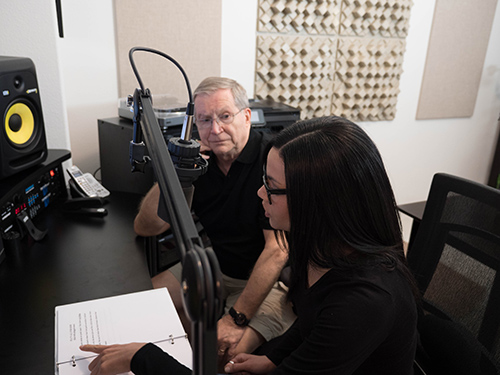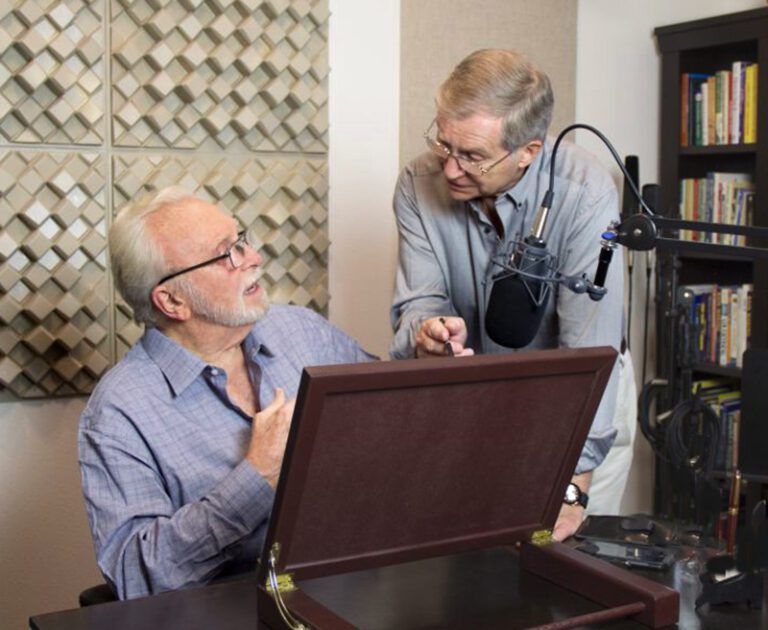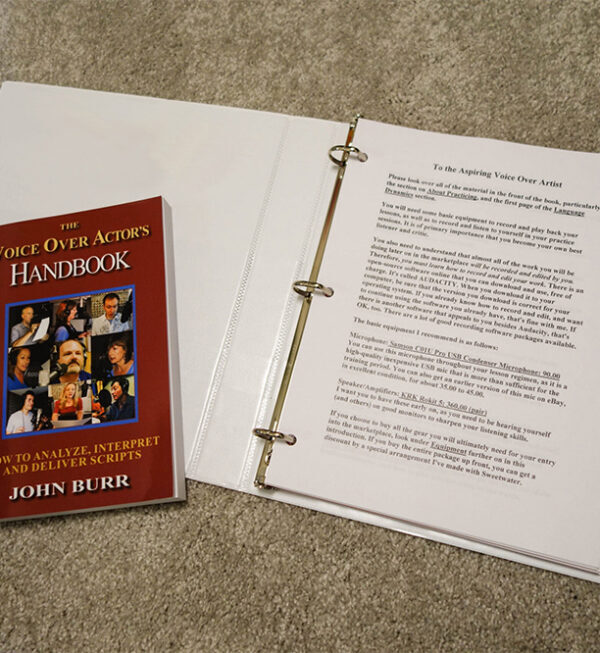Do you live more than an hour away from our studios, which prevents you from traveling to us for an evaluation and private instruction? The answer to the problem: voice over training online via Zoom.
You and John hear each other on your respective speakers, in full-range audio. The live video is full-frame, and usually very clear. (There are HD webcams now that are amazingly detailed.) The scenario is a faithful representation of a live one-on-one instruction session in the studio. You and John hear each other on your respective speakers, in full-range audio.

First, an evaluation session should be scheduled to determine your level of ability. If the outcome of the evaluation is positive, a coaching strategy will be recommended that best fits your voiceover training needs.
For the beginning student, I recommend and require a two-hour in-depth analysis of your basic talent, cold reading ability, acting and interpretive instincts, mastery of diction, and your working knowledge of many technical parameters, such as pace, pause, pitch, and timbre considerations, as well as comprehension of redundancy and points of emphasis. You will be given 15 short commercial and 15 narration scripts to deliver that make up a varied mix of most of the bread-and-butter categories that are characteristic of the marketplace.
You will receive a written evaluation, which will also be explained to you in the last half-hour of the session. The evaluation gets you off on a solid footing, as you and John know your strengths and areas that need work, and we will have determined whether or not you have the basic skills to pursue a voice over career.
The fee for the evaluation: 175.00
A two-hour, in-depth analysis of reading and interpretive abilities, as well as an assessment of fluency with English-language dynamics. The student will read and interpret an eclectic mix of 30 commercial and narration scripts, which are representative of most of the general categories characteristic of production requirements. Following the reads, John will discuss his specific assessments of the student’s present ability.


